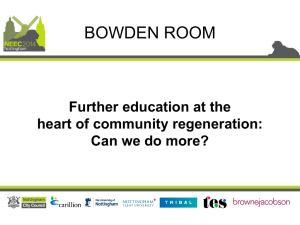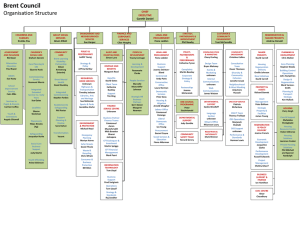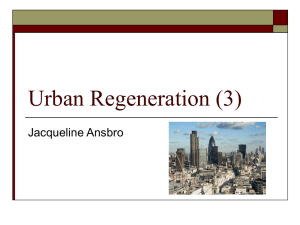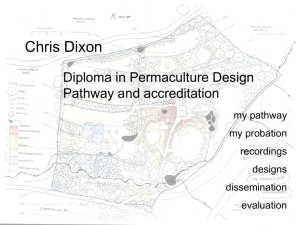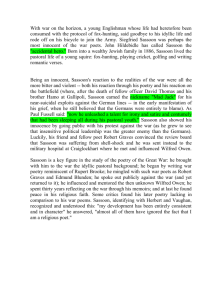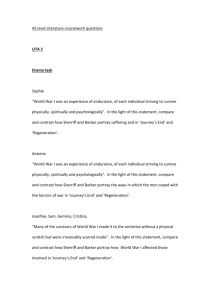history-v-fiction-1
advertisement
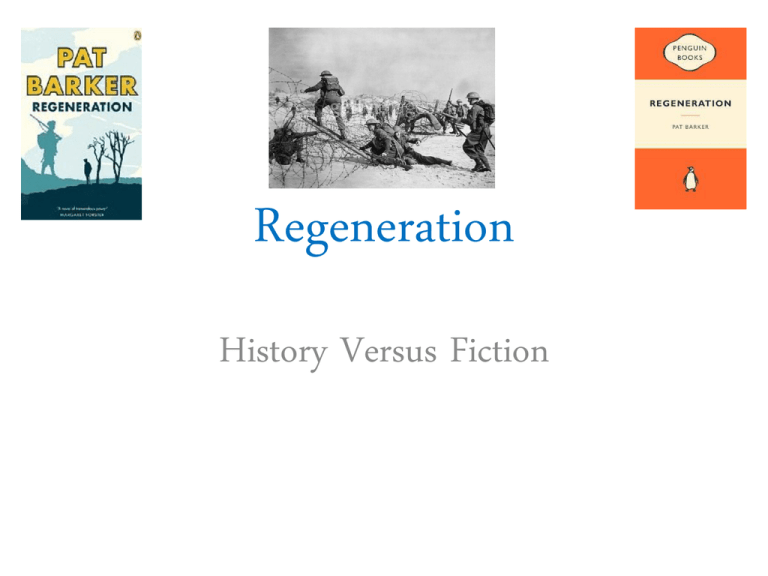
Regeneration History Versus Fiction Split into Two Groups You have 5 minutes to prepare your arguments to support the following statements…. GROUP A GROUP B Regeneration should be regarded as a Regeneration should be regarded as a work of fiction only. historical document. In your preparation, consider the following: • • • • Which characters / events / places etc. are based on real life? How accurate is Barker’s portrayal of life in the trenches? How can someone in the 1990’s possibly be able to accurately portray something that happened before her lifetime? What aspects of the novel are completely made-up? Regeneration as a Piece of Historical Writing Several elements allow us to consider Regeneration as historically exact. Real people In the novel, there is a whole list of characters who have really existed. • Several characters like Siegfried Sassoon, Wilfred Owen and Robert Graves were both poets and soldiers during the war. • The two psychiatrists also existed : Rivers had very modern Freudian views and Yealland did apply his own methods as it is described in the novel. • Pacifists like Lady Morrell and Bertrand Russell are real people. It is important to note that pacifism was strictly forbidden at the time. Regeneration as a Piece of Historical Writing Real facts and events • There are numerous references to battles (e.g. the battle of the Somme) • There are references to real places (e.g. : Flanders, Belgium). • The main setting is Craiglockhart, which is also real. Regeneration as a Piece of Historical Writing Her style of writing is realistic • Her descriptions of the landscape of war are based upon the testimonies of real soldiers and contain all the brutal truths. • Her presentation of the lives of the men while living in the trenches does not attempt to shield the reader from the harsh realities. • Her presentation of the physical and mental symptoms of the soldiers is based upon real documented evidence. Regeneration as a Piece of Historical Writing You have 10 minutes to find as many examples as possible of genuine historical detail recorded in the novel… You should have found: • P3 – Sassoon’s declaration • P24 – Sassoon’s The Rear Guard • P24-25 – Sassoon’s The General • P25 – The Warmongers • P69 – entry about Sassoon from The Times • P71 – report from the real Rivers on Sassoon • P81 – reference to Owen’s letters to his Mother – great historical source for Barker to draw on • P157 – extract from Sassoon’s The Troops • P189 – Sassoon’s Sick Leave • P217-18 – references to the poems of Alymer Strong Regeneration as a Piece of Fiction What distinguishes Regeneration from an entirely historical book? Fictional Characters • Prior - perhaps the most interesting character in the novel and he is entirely fictional. Does Barker have to invent a working class character because there are no historically represented working class officers from WW1? • Sarah – another interesting character, whilst based upon research of women on the home-front, is an entirely fictional character. • Burns and Anderson are also fictional Regeneration as a Piece of Fiction Dramatisation • This type of writing, which appeals to the reader’s imagination, is not found in historical writing. • Writers of fiction use a range of stylistic devices that are rarely found in historical writing. Have a look at page 160 • How does Barker’s style of writing differ from historical writing? • Have a go at re-writing this page as a historical document. Regeneration as a Piece of Fiction Perspective • Historical writing tends to have one objective voice. • Regeneration has a third person narrator who is able to present scenes through the eyes of the many characters. For example on p160, we see the ward through Sarah’s eyes. Therefore, it is a subjective account. • Find another example of a moment in the novel where we see objectively through another character’s eyes. Analyse the way the scene is presented. • The whole novel is based on revolt and anger and subjective responses to the Great War, beginning with Sassoon’s protest. Regeneration as a Piece of Fiction Time • There are very few dates in the novel. • Chronology is disrupted by many flash-backs. Historical writing is nearly always chronological. Fiction is crafted to create the greatest effect on the reader. • What is the impact of the use of flashbacks in the novel? Plenary… Discuss… 1. What right does Pat Barker have to try to present the suffering of a generation in order to make financial gain as a writer? 2. In terms of its place in presenting the harsh realities of the Great War, do you think it is more or less successful than a text which is either entirely fictional or entirely historical?
